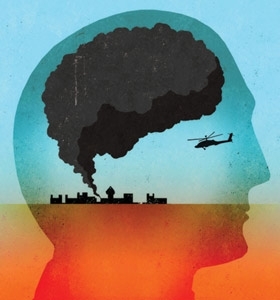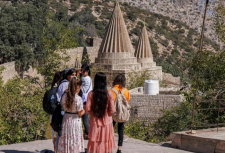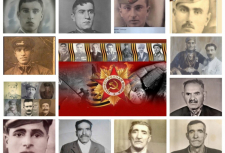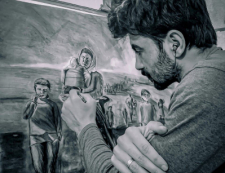A Study of Psychological Problem in Yazidi Children and Adolescents

Methods
The area of the study was Dohuk, one of the largest provinces of Iraqi Kurdistan in the northern part of Iraq. There are 27 refugee camps in this city, 18 of which are devoted to Yazidis. Khank Camp was selected from these camps due to the objectives of the study, greater number of children, and cooperation of the camp supervisor. At the time the research was conducted, more than 8000 children from different age groups lived in various camps of the city. The target population was made up of all displaced Yazidi children aged 9 - 15 years old in Khank Camp of Dohuk. After informing the authorities and the supervisor of the objectives of the study and receiving the required permits, the first researcher, accompanied by several Yazidi colleagues, started the study in Dohuk Camp. Yazidi assistants were selected due to their familiarity with the characteristics of Yazidis. Yazidi people are introverted and do not contact people of other sects.
The initial sample included 100 children selected based on their characteristics and existing sensitivities. The participants were divided into four groups of 25 children each. Each subject was asked to fill out the checklist separately. After being briefed on the objectives of the study, they were asked to voluntarily participate in the study and individually fill out the checklists.
It was emphasized that participation was not obligatory. Then, the checklist was described, and it was emphasized that there were no right or wrong answers; they were only required to choose the items that were true about them. The assistants also clarified that participants were allowed to raise hands for more assistance in case of any question or ambiguity. From 100 children, 51 participants were omitted due to their reluctance or to incomplete checklists. Most of these subjects were aged under 10. Ultimately 49 subjects (30 females and 19 males) participated in the study. The ages ranged from 8 to 15 years old with a mean and standard deviation of 12 and 1.86, respectively. One questionnaire and one checklist were employed to collect the data:1) A questionnaire to collect demographic data was composed of five questions regarding gender, age, school grade, year fleeing from their homeland, and time spent in the camp.2) Youth Pediatric Symptoms Checklist-17 (PSC-Y), which is extensively used as a valid tool to evaluate psychological dysfunctions in children. The original Pediatric Symptoms Checklist is used for parents but PSC-Y, which is like the original version, enables children to answer the questions by themselves. The original version of the checklist contains 35 items but based on the characteristics of the participants a version with 17 items was developed. The answers to these 17 items vary from “never” to “sometimes” or “often” with scores of 0,1, and 2, respectively. The total score equals the sum of scores obtained for each item. The checklist includes three subscales: the internalizing subscale with a cut-off line of five or above; the externalizing subscale with a cut-offline of seven or above; and the attention subscale with a cut-off point of seven or above. A total score of 15 or above reflects behavioral or emotional problems. According to the reported studies, the 17-item questionnaire correlates well with the original version, and the same subscales and cut-off points can be discerned.
Writers - Seyedeh Behnaz Hosseini and Pegah A.M. Seidi
Tags: #yazidisinfo #newsyazidi #aboutyazidi #humanrights
A Study of Psychological Problem in Yazidi Children and Adolescents

Methods
The area of the study was Dohuk, one of the largest provinces of Iraqi Kurdistan in the northern part of Iraq. There are 27 refugee camps in this city, 18 of which are devoted to Yazidis. Khank Camp was selected from these camps due to the objectives of the study, greater number of children, and cooperation of the camp supervisor. At the time the research was conducted, more than 8000 children from different age groups lived in various camps of the city. The target population was made up of all displaced Yazidi children aged 9 - 15 years old in Khank Camp of Dohuk. After informing the authorities and the supervisor of the objectives of the study and receiving the required permits, the first researcher, accompanied by several Yazidi colleagues, started the study in Dohuk Camp. Yazidi assistants were selected due to their familiarity with the characteristics of Yazidis. Yazidi people are introverted and do not contact people of other sects.
The initial sample included 100 children selected based on their characteristics and existing sensitivities. The participants were divided into four groups of 25 children each. Each subject was asked to fill out the checklist separately. After being briefed on the objectives of the study, they were asked to voluntarily participate in the study and individually fill out the checklists.
It was emphasized that participation was not obligatory. Then, the checklist was described, and it was emphasized that there were no right or wrong answers; they were only required to choose the items that were true about them. The assistants also clarified that participants were allowed to raise hands for more assistance in case of any question or ambiguity. From 100 children, 51 participants were omitted due to their reluctance or to incomplete checklists. Most of these subjects were aged under 10. Ultimately 49 subjects (30 females and 19 males) participated in the study. The ages ranged from 8 to 15 years old with a mean and standard deviation of 12 and 1.86, respectively. One questionnaire and one checklist were employed to collect the data:1) A questionnaire to collect demographic data was composed of five questions regarding gender, age, school grade, year fleeing from their homeland, and time spent in the camp.2) Youth Pediatric Symptoms Checklist-17 (PSC-Y), which is extensively used as a valid tool to evaluate psychological dysfunctions in children. The original Pediatric Symptoms Checklist is used for parents but PSC-Y, which is like the original version, enables children to answer the questions by themselves. The original version of the checklist contains 35 items but based on the characteristics of the participants a version with 17 items was developed. The answers to these 17 items vary from “never” to “sometimes” or “often” with scores of 0,1, and 2, respectively. The total score equals the sum of scores obtained for each item. The checklist includes three subscales: the internalizing subscale with a cut-off line of five or above; the externalizing subscale with a cut-offline of seven or above; and the attention subscale with a cut-off point of seven or above. A total score of 15 or above reflects behavioral or emotional problems. According to the reported studies, the 17-item questionnaire correlates well with the original version, and the same subscales and cut-off points can be discerned.
Writers - Seyedeh Behnaz Hosseini and Pegah A.M. Seidi
Tags: #yazidisinfo #newsyazidi #aboutyazidi #humanrights


























